Konstantin Eduardovitch Tsiolkovsky
Konstantin Eduardovitch Tsiolkovsky
Konstantin Eduardovitch Tsiolkovsky
1857-1935
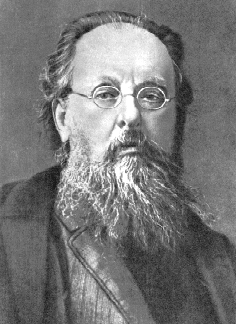
The life of Konstantin Eduardovitch Tsiolkovsky
1857-1935
|  |

Konstantin Tsiolkovsky was a true visionary and pioneer of astronautics. He theorized many aspects of human space travel and rocket propulsion decades before others, and played an important role in the development of the Soviet and Russian space programs.
He was born on September 17,1857, in the village of Ijevskoe, Ryasan Province, Russia, the son a a Polish forester who had emigrated to Russia. He was not from a rich family, but a very large one; Konstantin Tsiolkovsky had 17 brothers and sisters. At the age of 10 he lost his hearing as the result of scarlet fever. After that he couldn't attend school, and he never recieved any formal education. The knowledge and education he attained were acheived by himself. His books were his teachers, and he read every book in his father's library. Tsiolkovsky later remembered that his hearing loss influenced greatly his future life: during all his life he tried to prove to himself and to others that he was better and more clever than others, even with his disability.
In 1873-1876 Konstantin Tsiolkovsky lived in Moscow. During this time he visited the main Moscow libraries, among them the well known Pashkov House Library. It was in this fashion that he received his self-education. While in Moscow, Tsiolkovsky was tutored by the eccentric and brilliant Russian philosopher Nikolai Fedorovitch Fedorov, who was working in a Moscow library at the time. Fedorov was a leading proponent of Russian Cosmism, and gave Tsiolkovsky a place to work in the library. In many ways, he took the place of the university lecturers that Tsiolkovsky never had access to. At the age of17, while living in Moscow, he first dreamed about the possibility of space flight. He was, in part, inspired by the novels of Jules Verne. Since that time he started to think about the problems of space vehicle design. His great purpose was not simply to go into outer space, but to live in space, for humainity to become a space civilization.
In 1876-1879, after his coming back to his father's home, he lived in Vyatka and Ryasan. After passing his exams, he recieved his Teacher's Certificate, and went to work as a math teacher in Borovsk, Kaluga Province.
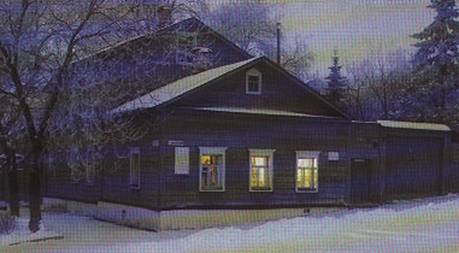 In 1880-1892 Tsiolkovsky lived in Borovsk and worked as a teacher. At that time he began his scientific research in air baloon building, life in free space, aerodynamics and philosophy. It was also at that time that he married. His wife, Barbara E. Sokolova, was the daughter of the local preacher. Together, they had 3 daughters and 4 sons.
In 1880-1892 Tsiolkovsky lived in Borovsk and worked as a teacher. At that time he began his scientific research in air baloon building, life in free space, aerodynamics and philosophy. It was also at that time that he married. His wife, Barbara E. Sokolova, was the daughter of the local preacher. Together, they had 3 daughters and 4 sons.
In 1892-1935 he lived and worked in Kaluga. His moving to Kaluga was the result of a teaching promotion. He lived in the house that is now a part of the museum complex with his family from the year 1904 until his death in 1935. It was here in Kaluga that he became a well known scientist, and where he wrote and published his theories of space flight and inter-planetary travels. In Kaluga he wrote his Cosmic Philosophy, and he dreamed about the far distant future of humanity, including the eventual conquest of space and our leaving the cradle of the planet Earth for the stars. He was made a member of the Soviet Academy of Science in 1919.
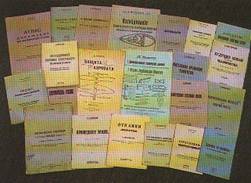 He received a government pension in 1920, and continued to work and write about space. Upon the publication of the works of German rocket pioneer Herman Oberth in 1923, his works were revised and published more widely, and he finally earned some international recognition for his ideas.
He received a government pension in 1920, and continued to work and write about space. Upon the publication of the works of German rocket pioneer Herman Oberth in 1923, his works were revised and published more widely, and he finally earned some international recognition for his ideas.
He wrote over 500 scientific papers, and, even though he never created any rockets himself, he influenced many young Russian engineers and designers. Tsiolkovsky lived to see a younger generation of Russian engineers and scientists begin to make his visionary concepts reality. Among these was Sergey Korolev, who would become the "Chief Designer" of the Soviet space program, who launched humanity into space with Sputnik, Laika, and the launch of the first cosmonaut,Yuri Gagarin.
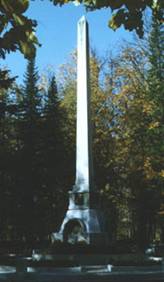
Konstantin E. Tsiolkovsky, the father of cosmonautics, died in Kaluga at the age of 78 on September 19,1935. He received an honored State funeral from the Soviet government. He was buried in the old Kaluga Cemetery.

The Work of Tsiolkovsky
"Men are weak now, and yet they transform the Earth's surface. In millions of years their might will increase to the extent that they will change the surface of the Earth, its oceans, the atmosphere, and themselves. They will control the climate and the Solar System just as they control the Earth. They will travel beyond the limits of our planetary system; they will reach other Suns, and use their fresh energy instead of the energy of their dying luminary."-Konstantin Tsiolkovsky
Tsiolkovsky is considered to be the father of cosmonautics and human space flight, and was a truly great thinker. His visionary ideas about the future of humanity in space were magnificent and far ahead of his time. He dreamed about space flight since he was a very young boy. Tsiolkovsky was certain that the future of human life will be in outer space, so he deceded that we must study the cosmos to pave the way for future generations.
Later, he proved mathematically the possibility of space flight, and wrote and published over 500 works about space travel and related subjects. These included the design and construction of space rockets, steerable rocket engines, multi-stage boosters, space stations, life in space, and more. His notebooks are filled with sketches of liquid-feuled rockets, detailed combustion chamber designs with steering vanes in the exhaust plume for directional control, double walled pressurized cabins to protect from meteorites, gyroscopes for attitude control, reclining seats to protect from high G loads at launch, air locks for exiting the spaceship into the vacume of space, and other amazingly accurate predictions of space travel. Many of these were done before the first airplane flight. He determined correctly that the escape velocity from the Earth into orbit was 8 km./second, and that this could be achieved by using a multi-stage rocket fueled by liquid oxygen and liquid hydrogen. He predicted the use of liquid oxygen and liquid hydrogen or liquid oxygen and kerosene for propulsion, spinning space stations for artificial gravity, mining asteroids for materials, space suits, the problems of eating, drinking, and sleeeping in weightlessness, and even closed cycle biological systems to provide food and oxygen for space colonies. Some of his works include:
· "Astronomical Drawings" (1879). The earliest manuscript of Tsiolkovsky. He drew the Solar System, the distances between the planets, their satellites, etc.
· 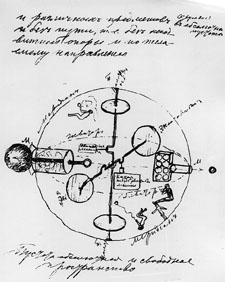 "Free Space" (1883). Manuscript of Tsiolkovsky, first published in 1956. In this work, he described the life and ways of motion in free space, zero gravity, all done without the benefit on any mathematical calculations. It was in this paper that Tsiolkovsky drew the primitive design of a true Space Craft, which moved in outer space with the help of reactive forces.
"Free Space" (1883). Manuscript of Tsiolkovsky, first published in 1956. In this work, he described the life and ways of motion in free space, zero gravity, all done without the benefit on any mathematical calculations. It was in this paper that Tsiolkovsky drew the primitive design of a true Space Craft, which moved in outer space with the help of reactive forces.